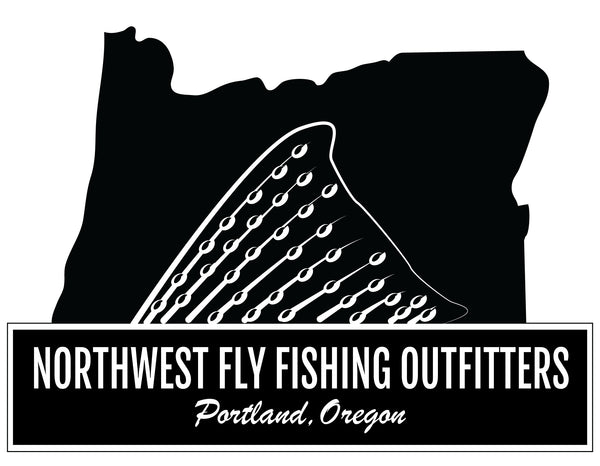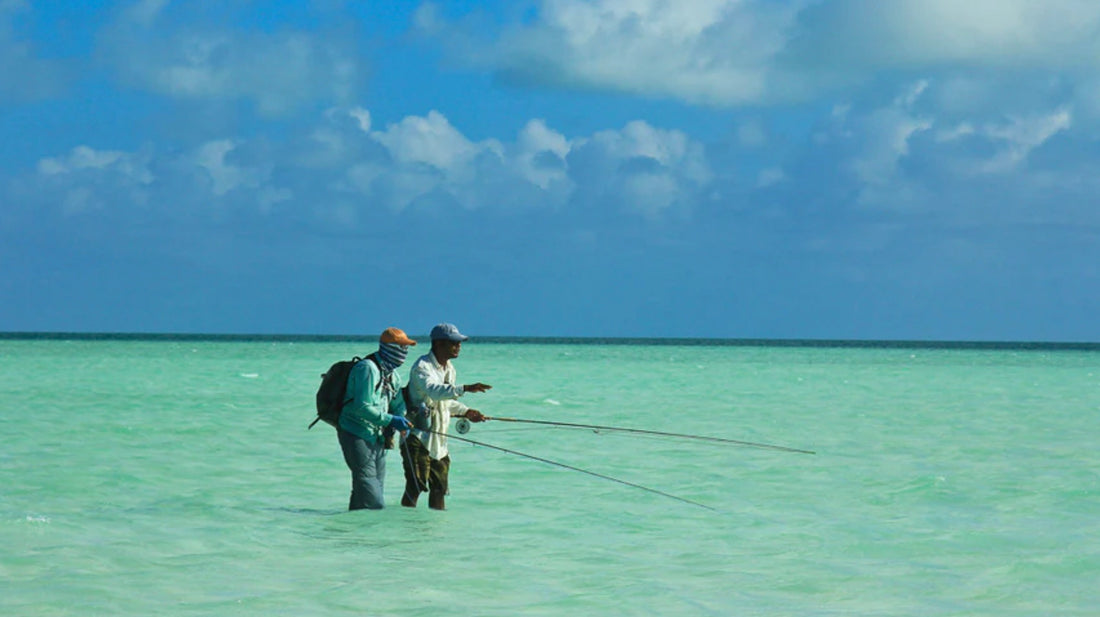Oh, the weather outside is frightful; a trip to a warm, sunny location would be delightful.

Have you ever considered trying a saltwater fishing trip to the Caribbean, Mexico, Cuba, Hawaii, Belize, or the Florida Keys? Here are some suggestions on how to get started. There are numerous species in the salt one can fish for, but for simplicity's sake, I’ll start with 4 of the most common - bonefish, permit, tarpon, and snook. One of the first decisions in setting up a saltwater adventure is deciding which species to target. Since this column targets beginners, let’s start with the Ghosts of the Flats - Bonefish. They are both challenging, strong, and so rewarding to catch!

The first thing is to decide where to go to chase these glorious fish and companies like Yellow Dog Flyfishing in Bozeman, Montana, The Fly Shop in Redding, California, or Flywater Travel in Ashland, Oregon, have extensive websites, catalogs, and phone help that can assist in deciding what is best for you in terms of where to go. As you consider traveling to a warmer climate, try to determine the following:
- Budget
- Type of Fishing
- Species
- Type of Accommodations (Avoid hurricane season, June-Nov)
Once you have narrowed it down, they can help set up your travel arrangements. Certainly, Northwest Flyfishing Outfitters can offer suggestions as well.
If you’ve never done this before, when you leave the country, you need a passport, and it helps to have TSA pre-check to speed up your check-in at the airport and Global Entry (interviews for applicants are backed up 10 months, so plan ahead) to speed up returns through US Customs.
Another thing to consider is how you want to chase these fish. It is easier to catch Bonefish from a flats boat where you stand on the boat's bow, and the guide points out where the fish is/are when he/she spots them. Usually, they will tell you how far to cast and where based on a clock’s face: "so 40 ft.,11:00- Cast man!". Unless you have physical limitations, try doing some flats wading, which is my favorite way to fish for bonefish. That would be something you want to specify when you arrange the trip.
This brings us to what you need as equipment for a successful trip. You don’t need much in the way of clothing. A couple of fishing shirts and pants and or shorts that are lightweight and quick drying is a must. I just shower with the clothes on at the end of the fishing day and hang them to dry. Bring a light raincoat as well as it does occasionally rain in these locations. You’ll need a pair of flats boots such as the Simms Flats Sneakers and a pair of the Simms Flyweight Wading Socks (they fold over the top of the Boots and help keep the sand out).
As for fly rods we have several we like to recommend at the fly shop we have personally put to the test:
- Winston Air Salt
- Sage Salt R8
- Echo EPR or Blue Boost
- Loomis IMX Pro VS-2
As for reels, you want a fully sealed drag system to prevent sand from getting into the drag system. We recommend reels such as:
You will need 150 yards of 30# backing or Gel Spun, which is 65# and smaller in diameter, so you can put on 200 yards. There are numerous RIO and SA lines for your reel, but if you are new to this, a short, heavier head like the Rio Quickshooter is a good starting line.
For a pack, I prefer a waist pack and the Fishpond Thunderhead Submersible lumbar or small. These packs are waterproof and have no metal zippers or tabs that will rust with the salt water. You will also need some bonefish leaders and tippet, and we recommend fluorocarbon, at least in the tippet. You will need good nippers and sunglasses like the Smith Guide Series, pliers, a good hat, and a buff for sun protection.
If you bring more than one fly rod setup, which is a good idea since many of these places and guides don’t have extra equipment, you should probably have a rod case that will also hold reels and flies. We prefer to carry our cases onto the plane to ensure they reach our destination in one piece. The Simms GTS Rod Vault is nice and has backpack straps, which makes it easier to carry. The Fishpond Dakota case is also a very good one. We don't have these in stock, but we can easily bring them in for you.
Two other things I recommend before you go. Practice casting with the wind because it’s always windy in these locations, and make sure you can double haul. If you need help, Call us at NWFFO and set up a casting lesson. It will be worth it. The other thing is to buy a copy of Do It Yourself Bonefishing by Rod Hamilton. The book's first part has invaluable information on how to fish for this species.
Good luck, grab your significant other or friends, and escape the wet, dreary PNW.
Ken Janoff

